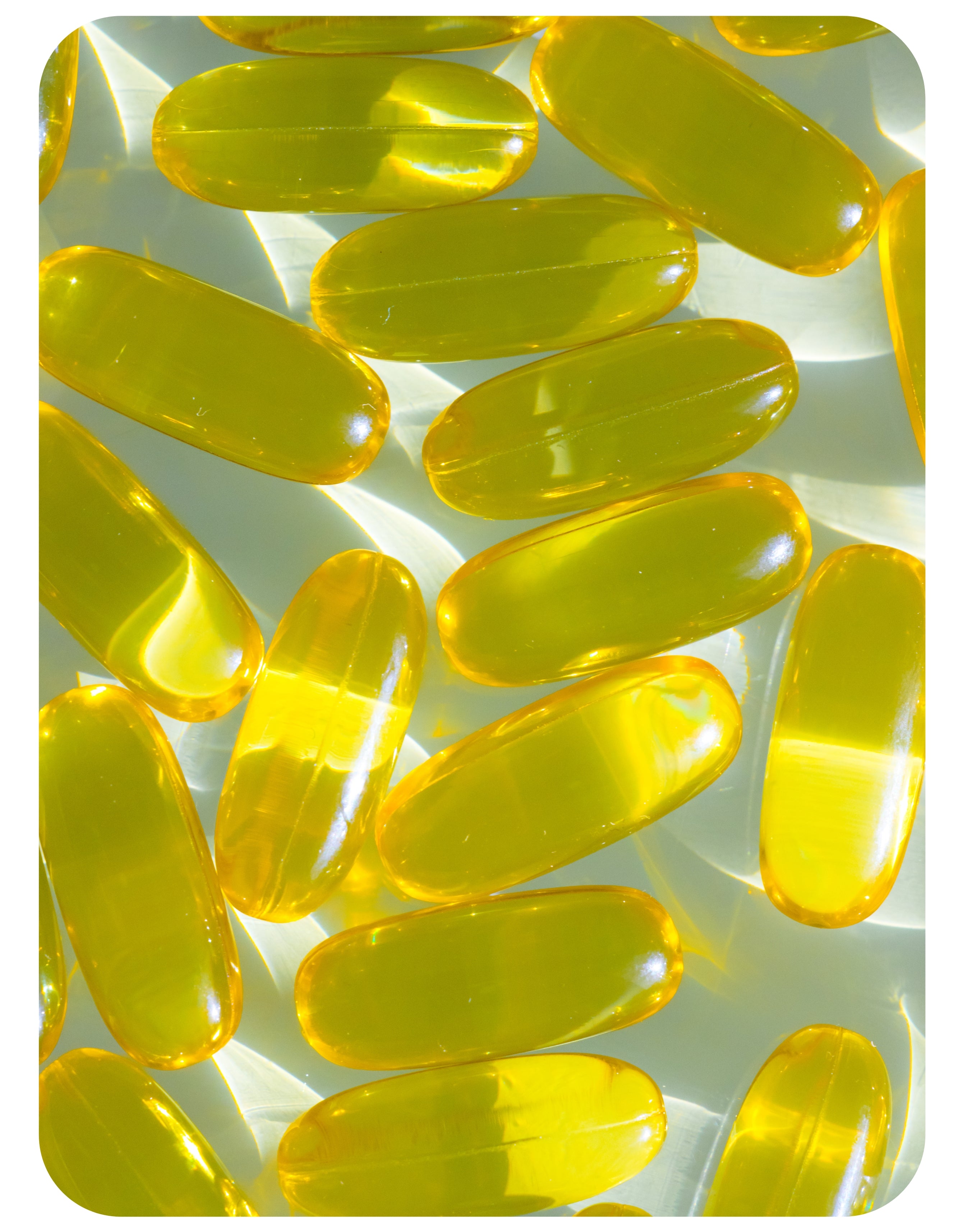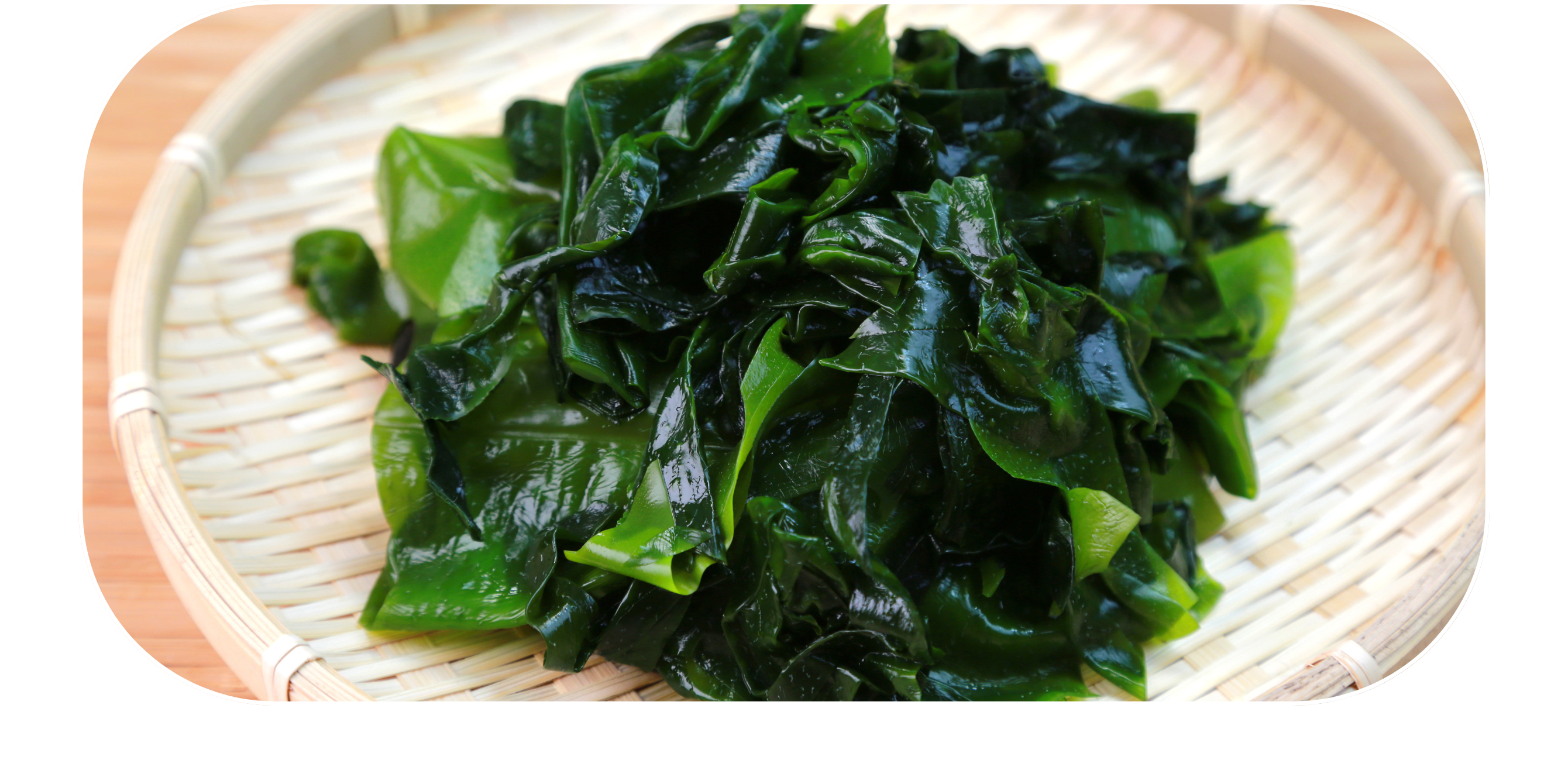Omega-3: benefits, properties and contraindications
What are Omega-3s? Very briefly, Omega-3s are a family of essential fatty acids; they are macronutrients with a macro impact on health.
Essential because your body absolutely needs them but cannot produce them in sufficient quantities to meet its needs. This is why it is so important to supplement them through diet or, more conveniently, through natural supplements.

The discovery of the benefits of Omega-3
We are in Greenland, surrounded by glaciers and deep, cold seas. This is home to the Inuit Eskimos. In the 1970s a group of researchers noticed something
extraordinary: the membranes of Inuit platelets were literally "soaked" in Omega-3. But this was just the tip of the iceberg: the
most surprising finding was that their risk of atherosclerosis (plaque buildup in the arteries that reduces their elasticity) was significantly lower than that of other populations.
Scientists linked this phenomenon to the diet of the Inuit (very rich in fish) and its impact on blood fat levels and blood clotting. Subsequent studies unveiled the true superpower of Omega-3s: once taken in, they are incorporated into the body's tissues, particularly nerve tissue, retina and heart muscle, and promote well-being.

What Omega-3s are good for
- They protect the heart, arteries, nervous system and eyesight.
- They decrease the risk of cardiovascular disease.
- They regulate cholesterol and triglyceride levels in the blood.
- They reduce the risk and symptoms of inflammatory bowel disease, rheumatoid arthritis,asthma, diabetes, cognitive decline, and stroke.
- They support children's growth.
- They facilitatesports activity recovery.
- They fight skin aging and improve hair health.
- They promote concentration and memory skills.
- They reduce the symptoms of some neurological and psychiatric diseases.
The benefits are truly endless: Omega-3 essential fatty acids play a truly vital role in our well-being . And they do so at every stage of our lives, from gestation to old age.
Omega-3, the benefits for the heart
Read Omega-3 and you immediately think of heart health. After all, the most studied benefits of these essential fatty acids relate precisely to the cardiovascular system.
Reduction of triglycerides
Omega-3s help you reduce triglyceride levels in the blood.
Increased "good" cholesterol
Omega-3 contributes to the increase in HDL cholesterol. The "good" one.
Antithrombotic properties
Omega-3s prevent the formation of blood clots and reduce the risk of heart attack and stroke.
Antiarrhythmic effect
Omega-3s help you regulate heart rhythm by counteracting arrhythmias.
Anti-inflammatory action
Omega-3s can help you fight hypertension, especially during old age.
The action exerted by Omega-3s against inflammation has also been associated with positive effects against inflammatory bowel disease (ulcerative rectocolitis and Crohn's disease) and some autoimmune-based rheumatologic diseases.
In addition, these fatty acids have been associated with the regulation of the immune response and certain growth factors-with potential implications also in controlling cell proliferation and fighting cancer.
Finally, Omega-3 intake has been associated with reducing symptoms of some neurological and psychiatric diseases and preventing one of the leading causes of vision loss in old age: age-related macular degeneration.
Contraindications of Omega-3s (specifically, Omega-3 supplements) concern people at risk of bleeding because they are taking particular drugs or substances, such as anticoagulants and nonsteroidal anti-inflammatory drugs (the NSAIDs). In fact, these polyunsaturated fatty acids can increase the time it takes for blood to clot.
In addition, it has not yet been determined whether those who are allergic to fish or shellfish can take fish oil products, one of the main types of Omega-3 supplements.

Benefits
Omega three fatty acids: EPA, DHA and ALA
Let's start with the progenitor of the Omega-3 family: alpha-linolenic acid (ALA). After intake, this acid is converted to EPA (eicosapentaenoic acid), which in turn is converted to DHA (docosahexaenoic acid). The latter are the two biologically active forms of Omega-3
responsible for all the benefits we have told you about.
Unfortunately, however, the conversion of ALA to EPA and DHA is far from efficient: less than 0.1% of ALA is converted to DHA.
How to make up for this limitation? By providing our bodies with "ready-to-use" EPA and DHA.
What are the main types of omega-3 fatty acids? What are the benefits of fatty acids
Not just Omega-3s: the family of essential fatty acids is vast. Here we get to know it better by telling you about all the benefits it gives us.
The fatty acids EPA and DHA

They help keep blood pressure and triglyceride levels in the blood under control and contribute to the proper functioning of the heart. These are the main benefits EFSA attributes to EPA and DHA. But that's not all: it also states that DHA promotes brain development, its proper functioning, and promotes healthy eyesight.
Omega-9

Among the "heart- and artery-friendly" unsaturated fats are Omega-9s, such as oleic acid. This family of fatty acids is recognized as having important benefits: they reduce cardiovascular and stroke risk because they increase "good" cholesterol and reduce "bad" cholesterol.
Omega-6 and conjugated acidolinoleic acid (CLA)

Linoleic acid (LA) is the progenitor of the Omega-6 polyunsaturated fats and, just like Omega-3, is a component of cell membranes. This acid can also occur in the form of conjugated linoleic acid (CLA), a valuable substance because it combats the development of atherosclerosis, reduces body fat, and regulates immune and inflammatory responses. It boasts recognized antimutagenic, anticarcinogenic, antiobesiogenic, antidiabetic, and antihypertensive properties.

Benefits in food
Where are omega-3 fatty acids found?
From the depths of the sea to land. Omega-3s can be of plant origin, such as ALA, or of marine origin, such as EPA and DHA found in saltwater fish and microalgae. Nutritionally, it is preferable to take Omega-3 sources of marine origin, so welcome Omega-3-rich fish in your diet!
Omega-3 rich fish

Fish are our Omega-3 mine. We are talking, in particular, about the fatty fish that swim in colder waters, such as salmon, mackerel, tuna, herring, sardines, and swordfish. But trout, carp, and mullet are also good sources of these essential fatty acids.
Then there are the leaner fish, such as sea bass, cod, and tilapia, which contain Omega-3s, yes, but to a lesser extent.
It is good to keep in mind that Omega-3 intake can never correspond to an absolute value, as it varies depending on how the fish is fed: the EPA and DHA content of farmed fish will, for example, be higher if they are fed feed based on marine ingredients, lower if they are fed other ingredients.
Vegetable omega-3s

Micro algae and algae oil. Here are the two plant sources of the highly valuable EPA and DHA. After all, Omega-3-rich fish get these fatty acids precisely by feeding on micro algae.
Other plant sources of Omega-3, however, are rich in alpha-linolenic acid (ALA).
Alpha-linolenic acid (ALA)

Walnuts, flaxseeds and flaxseed oil, canola oil, soybeans and soybean oil, chia seeds, and green leafy vegetables. That's where you can find, in nature, the progenitor of the Omega-3 family: alpha-linolenic acid.
Alpha-linoleic acid (ALA)

Alpha-linolenic acid, progenitor of the Omega-3 family, can help keep blood cholesterol levels in the normal range.
The human body converts it into the biologically active Omega-3s, EPA and DHA, but unfortunately the efficiency of this conversion is very low, and it is estimated that less than 0.1% of ALA intake is converted to DHA.
Omega-3 and Omega-6 supplements

Do you want to ensure a proper balance of Omega-3, Omega-6 and Omega-9? You're on the safe side with supplements: you can easily meet your needs (even when they increase, as in pregnancy) and fully enjoy all the benefits of these essential fatty acids.
But be careful: not all supplements are the same. To choose a quality, affordable product you need to look carefully at the label: you need to estimate the EPA and DHA content per capsule (not per package) and multiply this value by the number of capsules so you can trace the total EPA+DHA content of the package. If you divide the package price by the total EPA+DHA content you will be able to trace the price per 1,000 mg of Omega-3. Then compare this price with that of other products to see which is the most affordable.
In addition to price, it is also good to evaluate the origin of the Omega-3s in the supplement and the quality of the product in terms of purity and freshness.
Fish
Salmon, mackerel, tuna, herring, sardines, swordfish, trout, carp, and mullet are our EPA and DHA mines.
Crustaceans and algae
Krill, a small shrimp-like crustacean that inhabits Antarctic waters, and plant sources such asSchizochytrium algae also contain EPA and DHA.
Oils and seeds
ALA can be found in: walnuts, flaxseed and flaxseed oil, canola oil, soybeans and soybean oil, chia seeds, and green leafy vegetables.
Supplements
Omega-3 supplements:
what are they for?
- They protect the cardiovascular system.
- They lower blood triglyceride levels.
- They support the development and health of the nervous system and eyes.
We could continue this list, but here we simply identify the main reasons why Omega-3 supplements are used.
More generally: supplements are an extra support for those who want to ensure a balanced diet. In fact, they help us meet the needs for EPA and DHA that, with diet alone, we struggle to meet. Then there are special cases, such as the period of pregnancy and lactation, when fish consumption must be limited (because of the risk of mercury contamination). Here, at times like these, we need help to meet our requirements for EPA and DHA, which are also essential for fetal development. That help we can find in a safe, quality Omega-3 supplement-your doctor will surely know how best to advise you.

Supplements
Omega-3 supplements: what are they for?
Omega-3 supplements are mainly used for 3 purposes:
- Protect cardiovascular health;
- Provide Omega-3s needed for the development of the nervous system and eyes;
- Meeting the daily requirement of EPA and DHA when not eating enough fish with Omega-3.
Studies over the years have also suggested that they may be useful in combating various issues-from diabetes to depression-and there is no shortage of those who use them in veterinary settings (Omega-3s for dogs are sometimes recommended, for example).
Omega-3 supplements
The best omega-3 supplements
Not all supplements are the same. For that matter, not all omega-3s are the same. In fact, these essential fatty acids can come in different forms:
- Natural triglycerides: these are the original form, the one you find in fish oil.
- Phospholipids: found mainly in krill oil.
- Ethyl esters: are obtained from natural triglycerides by replacing the glycerol molecule with ethanol.
- Reesterified triglycerides: result from the conversion of ethyl esters back to triglycerides.
- Free fatty acids.
All of these forms help to increase EPA and DHA levels in the blood, but your body prefers triglycerides (natural or re-esterified) and free fatty acids because it can absorb them more easily-we have devoted an in-depth article "Omega-3 EPA and DHA more effective when in triglyceride form" to this topic.
Therefore, the best supplements are those that contain Omega-3 in the most bioavailable (most easily absorbed) forms: triglycerides and free fatty acids.
In addition to this, it is important to go for products with certified purity, freshness and concentration. It's like having a seal of assurance!
A word of advice? Rely on certifications that follow benchmark standards set by the Global Organization for EPA and DHA Omega-3s (GOED). Among the best-known laboratories are those in Nutrasource's International Fish Oil Standards (IFOS) testing and certification program. So you can trust products that have GOED or IFOS certifications. They are the Michelin stars of Omega-3s.
IFOS certification assigns a star rating (maximum 5) to supplements, where each star corresponds to a specific quality:
- The correspondence between the detected concentration of active ingredients and the labeled concentration;
- The level of oxidation, which must be less than 75 percent of the standard specified by the Council for Responsible Nutrition (CRN);
- The level of PCBs (industrial chemical compounds), which must be less than 50 percent of the CRN standard;
- the level of dioxins (toxic substances produced by industrial processes), which must be less than 50 percent of the standard specified by the World Health Organization (WHO);
- The assignment of positive ratings in all tests to which the product has been subjected.
If you are looking for safe, premium quality products, you should know that our natural supplements are certified by the very IFOS program that awarded an impressive 5 stars to Omegor Vitality, VitaDHA 1000 and Meaquor 1000.
This means Omegor is the natural supplement you can trust. Seriously.

Omega-3 supplements
Omega-3 RX
You may be wondering what that "RX" indicates. This is an important indicator because it tells you that the Omega-3 supplement you are looking at is pharmaceutical grade, meaning that it meets all the standards required for medicinal use.
With Omega-3 RX we run in Formula 1: these supplements feature extremely high concentrations of EPA and DHA. The Omega-3 content in each capsule is almost 100 percent. But not only that, Omega-3 RX supplements go through a very rigorous purification process, so they are less likely to contain undesirable substances such as contaminants and toxins (such as mercury), but the amounts of excess cholesterol and saturated fats are also much lower than in other dietary supplements.
Omega-3: the daily dose we need
What is needed here is precision and accuracy. That's why, when we talk about Omega-3s and dosages, we rely on LARNs (reference intake levels of nutrients and energy set by EFSA, the European Food Safety Authority), which recommend:
- For adults and the elderly: 250 mg EPA+DHA daily.
- For pregnant or lactating women: 250 mg EPA+DHA, plus 100-200 mg DHA daily. Because extra support is needed in this case.
- For children 0 to 2 years old: 250 mg EPA+DHA, plus 100 mg DHA daily.
- For children 2 years and older: 250 mg EPA+DHA daily.
Regarding dietary supplements specifically, EFSA has established very clear guidelines. In these tables we have collected, in addition to the benefits dispensed by Omega-3s, the recommended maximum intake levels.
Table 1
OMEGA-3
BENEFITS
DAILY DOSE
ALA
Maintenance of normal cholesterol levels
2g
EPA+DHA
Normal functioning of the heart
250mg
DHA
Normal brain and eye development of the fetus and breastfed babies
200 mg (maternal intake)
Table 2
AGE
SEX
MAXIMUM DAILY DOSE
4 to 14 years old
Males and females
5 grams
From 15 years old
Females
5 grams
From 15 years old
Males
5 grams
Side effects
Omega-3 supplements and side effects
Good news: Omega-3 supplements are usually very well tolerated by our bodies. Possible side effects-which occur most often when supplements are of low quality-mostly include gastrointestinal symptoms such as belching, stomach pain or discomfort, diarrhea or constipation.
The important thing is to keep them monitored: if the complaints worsen or don't hint at disappearing, see your doctor.
Omega-3 and contraindications: when it is good to consult your doctor
Omega-3s can increase blood clotting time. And this is usually a positive action for cardiovascular health. But there is a "but." This effect, combined with the action of drugs that in turn affect clotting time, can become problematic.
Therefore, it is good to inform your doctor about medications, supplements and herbal medicines you are taking, especially if you are taking:
- anticoagulants;
- antiplatelet;
- beta blockers;
- diuretics;
- Estrogen-based contraceptives;
- hormone replacement therapy;
- NSAIDs (nonsteroidal anti-inflammatory drugs used to reduce pain, inflammation, and fever.
More generally, it is always good to seek medical advice in case of:
- any type of allergy-still unclear whether fish oil supplements with Omega-3 can cause reactions if you have allergies to fish and shellfish;
- diabetes;
- Atrial fibrillation or atrial flutter (two types of arrhythmia);
- Liver, thyroid, or pancreatic diseases;
- pregnancy and breastfeeding.
Be careful if you hire:
Anticoagulants, antiplatelets, beta-blockers, diuretics, estrogen-based contraceptives, hormone replacement therapy, and NSAIDs.
Be careful in case of:
Any type of allergy, diabetes, atrial fibrillation or atrial flutter, thyroid or pancreatic liver disease, pregnancy and breastfeeding.

Ask the pharmacist
Our team of professionals is ready to answer all your questions about supplements, nutrition, or health in general. You will receive a response within 2-3 business days, with personalized advice and clear, scientifically based information.
Bibliography
Averna MR et Al. Omega 3 and cardiovascular risk reduction. PPG Scientific Editions, 2003
Drugs.com. Omega-3 Fatty Acid Capsules
EU Register of nutrition and health claims made on foods
IFOS - The international fish oil standards program
MedlinePlus. Omega-3 fats: Good for your heart
MedlinePlus. Omega-3 Fatty Acids
NIH. Omega-3 Supplements: In Depth.
Pawlosky, R. J., et al . Physiological compartmental analysis of alpha-linolenic acid metabolism in adult humans. J. Lipid Res. 42(8):1257-1265, 2001.
University of Colorado - Colorado Springs. Omega-3, 6, and 9 and How They Add Up.

